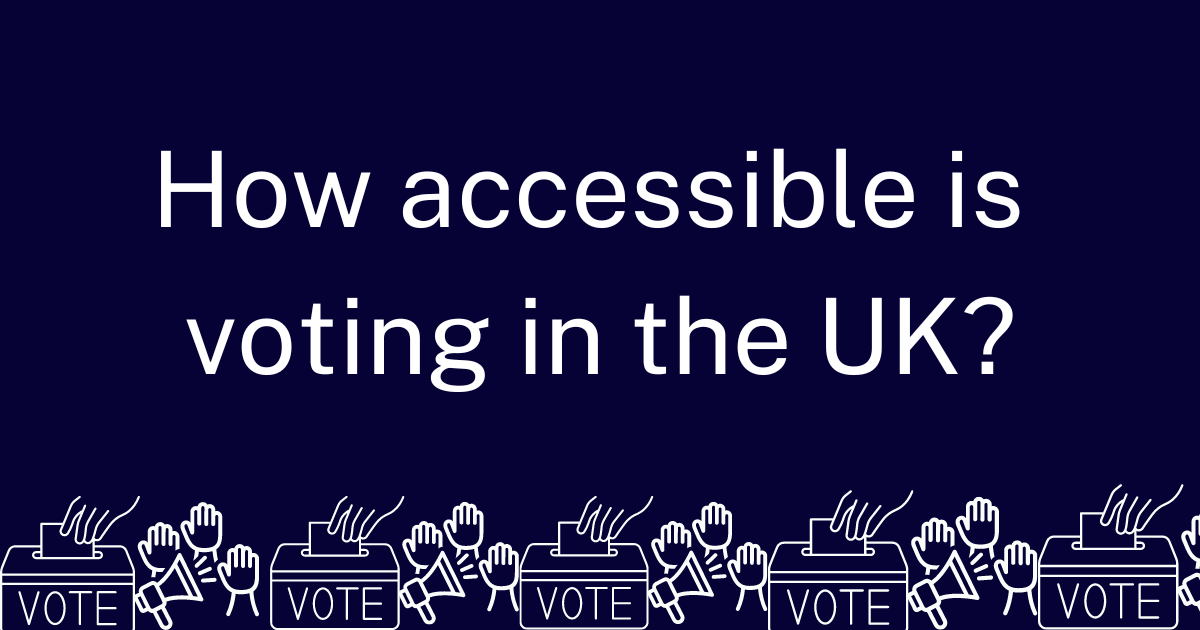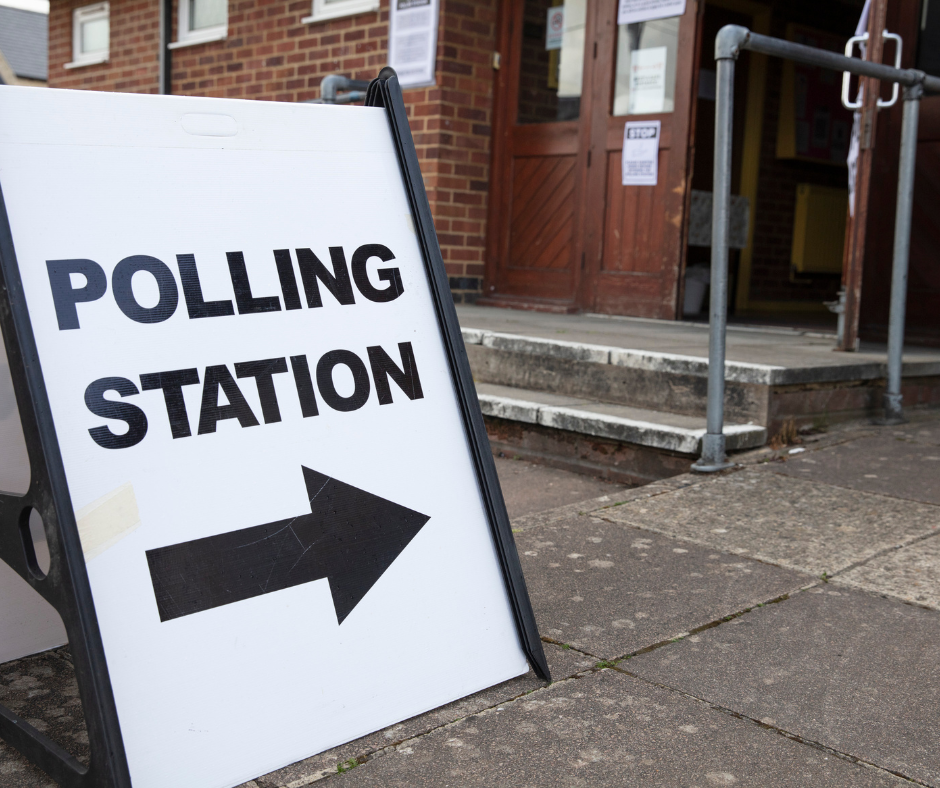
Whether you’re into politics or not, in the UK we are fortunate that we have the free right to vote, and as the general election approaches on the 4th of July, it’s important to know what measures are in place to facilitate accessible voting for all.
The Equality Act (2010) states that disabled people have an equal right to vote, including via the provision of reasonable adjustments. As a minimum, all polling stations are accessible for wheelchair users. Where the polling station is not all on one level, elevators and ramps are available, and every polling station has a wheelchair accessible voting booth. You can also apply to vote by proxy if you can’t vote in person due to a disability.
However, there are other types of support available if you are voting in person. As set out by the Electoral Commission, every polling station should also provide:
- Braille or large print ballot paper
- A tactile voting device which sticks to a ballot paper. This allows blind or partially sighted voters to mark their ballot paper
- A magnifier
- Additional lighting
- Translations of the instructions on how to vote in different languages
- Help from a companion or the polling station’s Presiding Officer, who are able to join you in the polling booth and help you mark your vote. Your companion and the Presiding Officer will need to sign a form before you vote to keep a record that someone is going into the polling booth with you
If any of the above applies to your accessibility needs, you should make this known to polling station staff who will be able to assist and arrange this for you.
Many disabled people feel there are still too many barriers when voting at the polling stations, with many choosing to fill out a postal votes instead.

We spoke to Imran who is severely sight impaired and has taken the option to postal vote, after previous negative experiences with the options available to him at polling stations.
"I am a postal voter and have been for some years. My experience of voting at a polling stations is not entirely positive. I am registered severely sight impaired and I always try to be as independent as possible. To vote, however, I need someone to go in with me to the polling booth, read out the information on the polling card and mark my selection for me. There are tactile plastic templates available which can go over the polling card, but I would need to put it in the right position and then know which order the parties are on the polling card. There are also audio devices which can be used which will read out the options on the polling card, but this needs to be requested in writing from the Returning Officer, and then approved in time for the election day. Having to go through all this just to exercise your democratic right seems a little much, and most people will just not bother with the hassle.
I have the same issues with voting by post, but at least I can do it at home without verbally announcing my voting selection in a public place. Some countries, such as Australia, allow people to vote by phone, which would be much more accessible. With technology the way it is, it is surprising that a more intuitive and simpler method of voting hasn’t been implemented."
Although there are measures in place to support the accessibility of voting in person, it’s clear that we are not quite there yet. The frustrations voiced by Imran are sadly a reality that many are faced with when exercising their right to vote. In a research paper published by Samuel Brown and Melanie Jones, the ‘disability voting gap’ across UK General Elections between 2010 and 2019 is found to be 6.2 percentage points. They state that ‘More than half of this gap is explained by the channels of resources and recruitment, with evidence of a residual disability gap consistent with additional disability-specific barriers to participation’.
It's clear that the current accessibility measures in place for voting in the UK need to be assessed in order to break down disability-specific barriers, and to be able to close the disability voting gap.
The Living Made Easy website has a vast range of aids, adaptations and assistive technology, which may help make the voting process easier, whether that’s at the polling station or at home via a postal vote. Click here to be taken to the site.
To view the sites listed in this article please click on the bold and underlined text. You can also find them listed below.